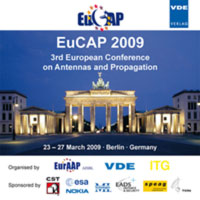Design of the Time-Reversal Hyperthermia System
Konferenz: EuCAP 2009 - 3rd European Conference on Antennas and Propagation
23.03.2009 - 27.03.2009 in Berlin, Germany
Tagungsband: EuCAP 2009
Seiten: 4Sprache: EnglischTyp: PDF
Persönliche VDE-Mitglieder erhalten auf diesen Artikel 10% Rabatt
Autoren:
Trefná, Hana Dobsícek; Persson (Dept. Signal and Systems, Chalmers University of Technology, Hörsalsvägen 11, Gothenburg, Sweden)
Togni, Paolo; Mikael, Jan Vrba (Dept. Electromagnetical Field, Czech Technical University, Technicka 2, Prague, Czech Republic)
Inhalt:
Hyperthermia is presently used as an adjuvant to the radiation therapy in the treatment of certain types of cancers. Recently, many randomised trials have shown a significant advantage of addition of hyperthermia combined with radiotherapy and/or chemotherapy in the treatment of solid tumours. The objective of hyperthermia treatment is to raise the temperature in the tumour to a therapeutic level 41deg C - 44deg C for a sufficient period of time to achieve cell death or render the cells more sensitive to ionizing radiation and chemical toxins. The present challenge is adequately heating of deep seated tumours while preventing surrounding healthy tissue from undesired overheating and damage. In this contribution, we present a prototype of a new system for microwave hyperthermia based on time-reversal. Our previous results, conducted in 2-D realistic anatomy models of neck and breast, have shown that the algorithm focuses EM energy better at high frequencies hence these fit well to treatment of small tumours. The level of absorbed energy is also strongly dependent on size of treated area through penetration depth of EM waves, thus selection of the frequency depends on treated area sizes as well as tumour volume. This is in contrast to the present heating equipment which tends to work only at ISM frequencies, allocated for Industry, Science and Medicine in Europe. In contrast to traditional optimization methods, in which is applied field typically focused by optimizing the Specific absorption rate (SAR) or the temperature, TR approach allows using of both harmonics sources and UWB pulses. Using of UWB pulses is another approach to significantly improve the focusing ability of the system.


